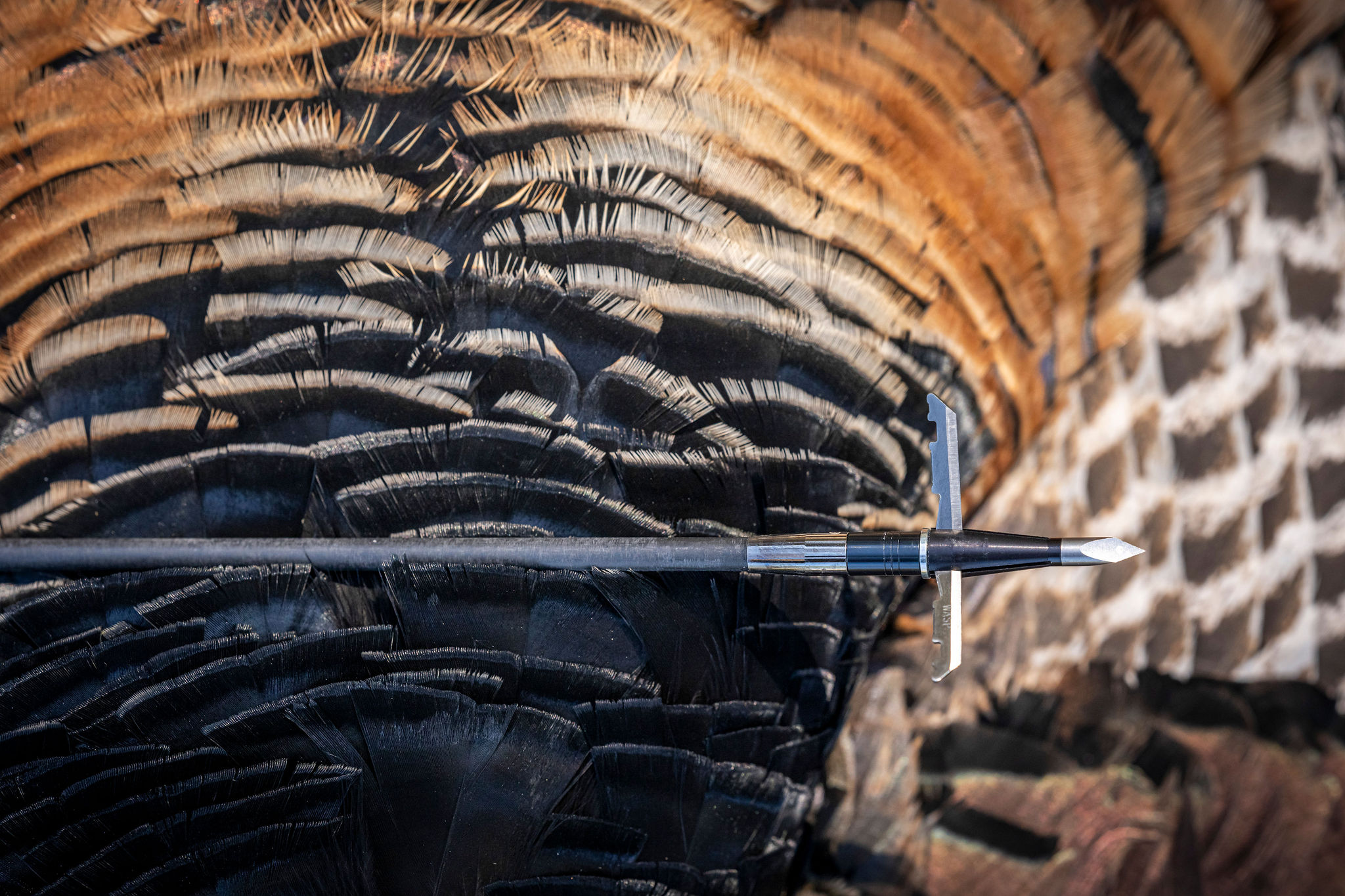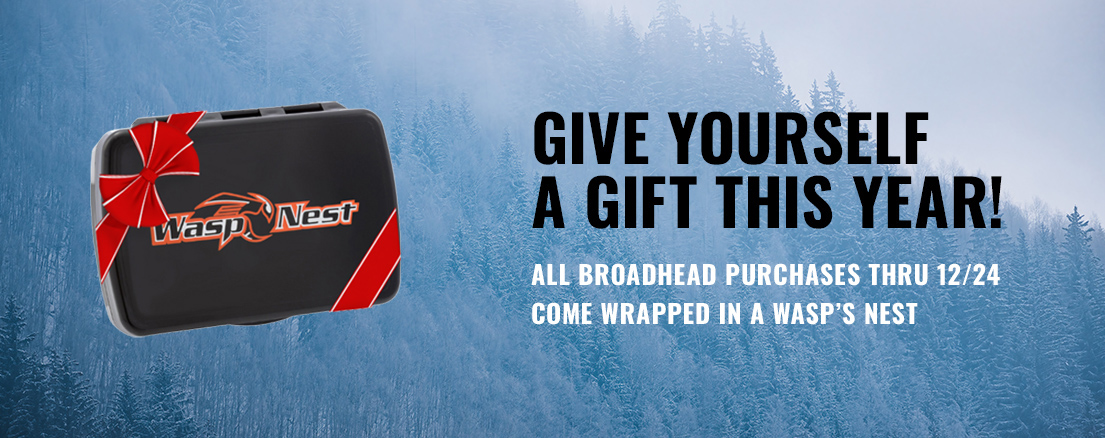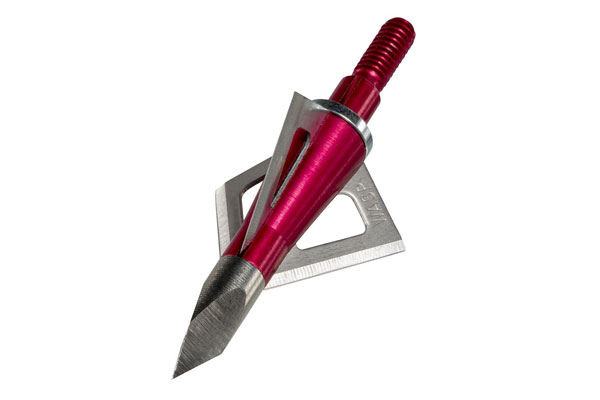Is a Pass-Through Shot Always Best?
In bowhunting, two holes are usually better than one, but there are exceptions to the rule
Many bowhunters believe that when it comes to humane kills and easy-to-follow blood trails, pass-through shots are always best. After all, two holes spill more blood than one, right? Yet, other hunters insist that a broadhead that stays in the animal after the hit impedes the animal’s ability to escape and inflicts even more damage. They claim that this is particularly favorable on game such as wild turkeys, which are notoriously difficult to recover if they’re able to take flight after the shot.
Generally speaking, the experienced bowhunters on the Wasp Archery staff prefer pass-through shots, given two arrows that hit the exact same place. That’s why we strive to build products that are tough enough and sharp enough to do just that. But there are nonetheless some instances when arrows don’t pass through and yet are lethal within seconds. In other words, if you don’t get a pass through, it’s not always bad news. Let’s look at multiple scenarios.
WHEN PASS-THROUGHS ARE BEST
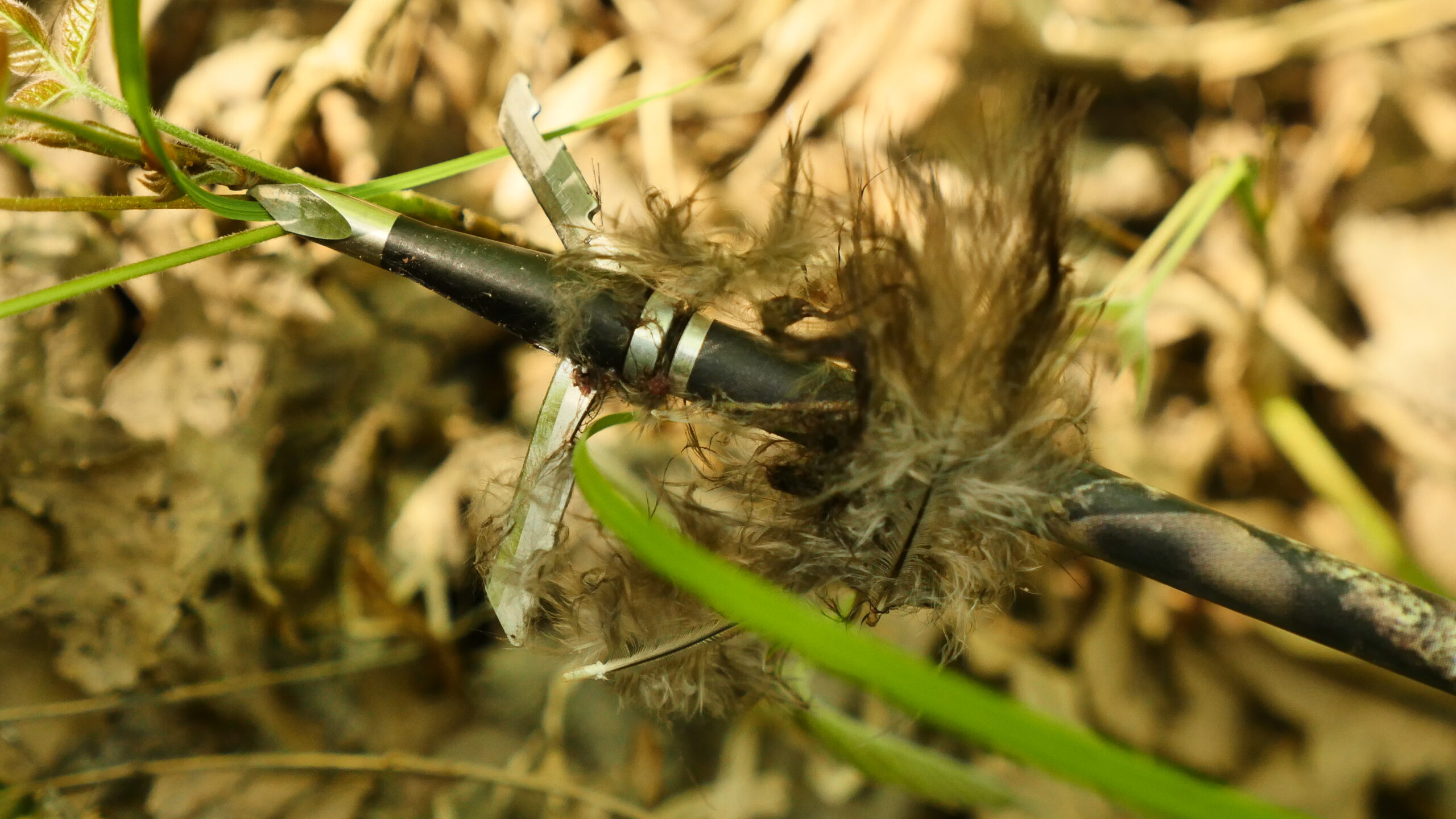
With a bow, a broadside angle that targets the lungs is the bread-and-butter shot for any hoofed big-game animal. Done correctly, this shot won’t put the arrow and broadhead into contact with bone that’s any heavier than a rib, and even lightweight compound hunting setups should have no trouble punching through that on deer-sized game. Animals big and small that are hit squarely through both lungs generally run 70 to 100 yards and bleed heavily, but the most profuse blood trails happen when the animal is bleeding from both sides.
Two holes become even more critical when the shot is less than perfect. A hit that’s a little “back” in the liver or paunch, for example, will kill the animal, but it can take several hours, and the chances of recovery are highest if the animal isn’t disturbed from its bed. Finding the arrow and assessing the blood sign on the shaft and fletching is critical for knowing how to best follow up the track. Such hits usually result in a steady, dripping blood trail and again, the trail is easier to follow if two holes are dripping.
Pass-through shots are especially beneficial to treestand hunters, or for anyone else shooting from elevated positions. In that scenario, entry wounds are often high on the animal’s chest, and gravity prevents a lot of blood from spilling onto the ground. An offside exit wound that’s lower on the body alleviates that issue.
Many hunters prefer mechanical broadheads with large cutting diameters for whitetail-sized game because they inflict maximum damage on broadside shots, and allow for some margin of error in the event that the hit isn’t perfect. If you can push a 2-inch mechanical broadhead such as a Wasp Jak-Knife through both of a buck’s lungs and exit the rib cage, recovery is virtually assured at the end of a short, easy blood trail. The same is true for big spring gobblers. A wide cutting diameter provides the best chance for hitting a tom’s small vitals, and if it passes through, so much the better. Yes, turkeys can be tough to recover if they take flight. But the best way to prevent that is to make a good shot in the first place with a broadhead that breaks bone, inflicts maximum damage to the vital organs, and punches through both sides of the bird.
WHEN ARROWS STOP COLD
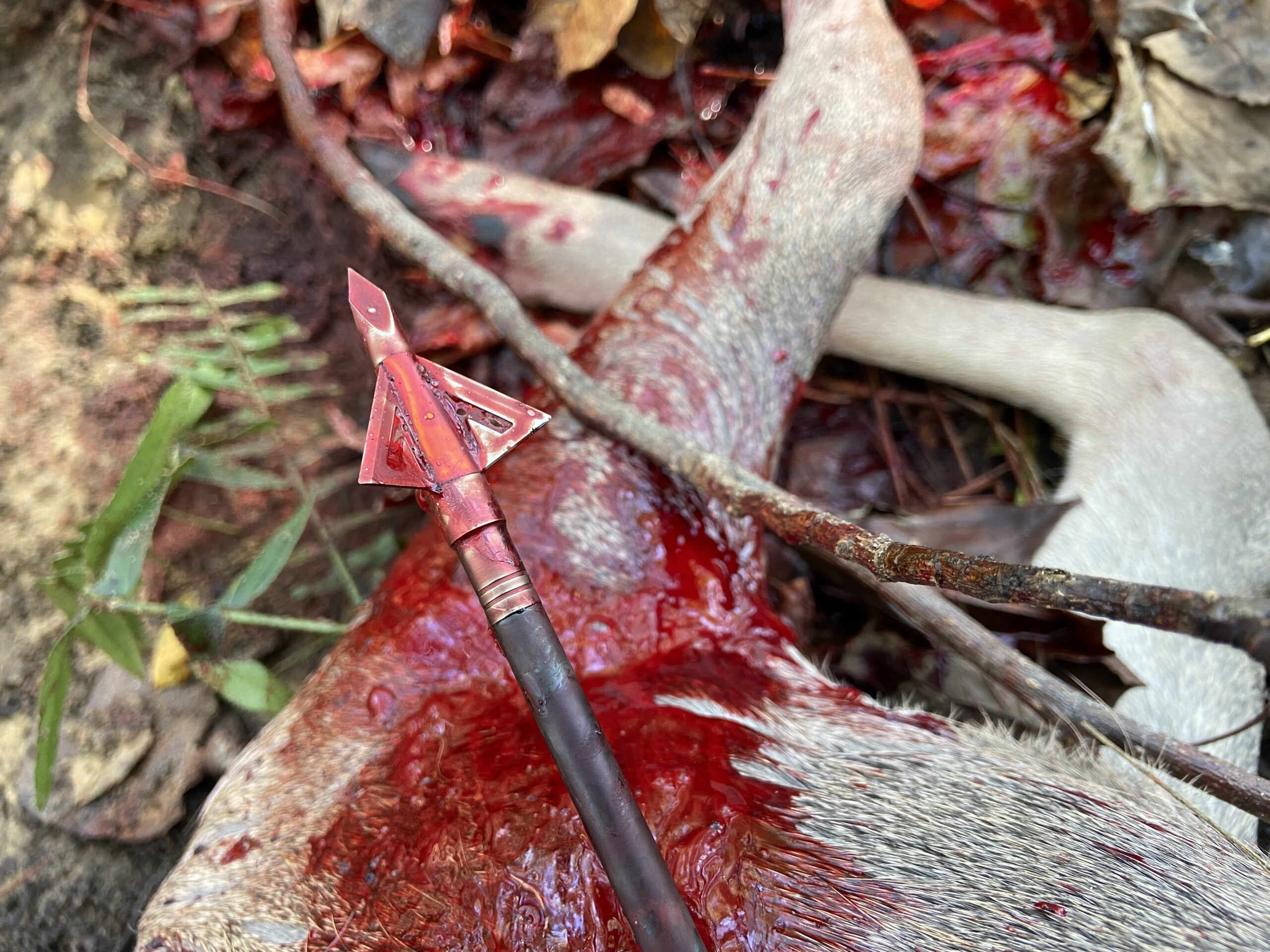
A customer sent this photo of a Wasp Havalon HV broadhead that punched through the shoulder of a Tennessee doe, but was still good as new after cleanup.
The near automatic benefits of a pass-through change a bit when shot angles aren’t perfectly broadside. Quartering-away shots can be particularly deadly, but from that angle, an arrow that zips through without slowing down isn’t always a great sign. Sometimes it means you’ve hit too far forward, causing your broadhead to slice along one edge of the vitals, hitting a single lung or even superficial muscle tissue. Other times it means you’ve hit too far back, with an entry through the guts and an exit through the liver or rear lung area. That shot is fatal, but not quickly.
The fastest quartering-away kills happen when the broadhead centers the offside shoulder. This hit shreds the major blood vessels found in the forward heart-and-lung area. Heavy shoulder bones may be enough to stop the arrow from passing completely through, but it rarely matters. Animals hit here seldom make it more than 50 yards before collapsing.
“Aim for the Exit” is one rule that’s universally good for bowhunters to follow and in the case of a quartering-away shot, that can mean intentionally trying to hit heavy bone that’s likely to prevent the arrow from passing through. The same can be said of quartering-to shots, which are a little trickier but just as deadly when done right. Well-built fixed-blade broadheads like the Wasp Havalon HV are designed to penetrate deeply and, with our 100% stainless-steel Trocar tip, break bone on contact. They’re ideal for quartering shots.
It’s true that a pass-through is usually best—but experienced archers know that for every rule in bowhunting, there are always exceptions.
— Story by Wasp Archery staff; turkey photo by John Hafner
View All Posts
